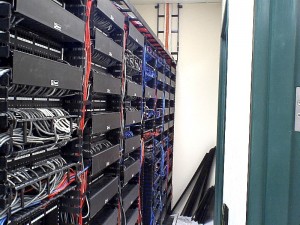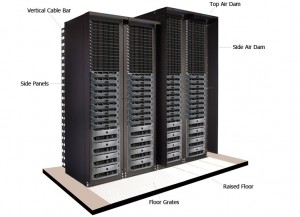We provide complete IT Solution according client’s requirement. Our team survey the site and design the network structure and implement it. We setup the network devices and configure them. We setup the Server machines and configure them. We are offering Network Solution as per the defined industry standards, which include assembling of various products of different manufacturers’ to make a single system. Our skilled workforce provides excellent services for designing, up gradation and expansion of business networks. These are acknowledged by our clients as these supplies technically efficient, reliable and affordable solutions.
We provide full-service network solutions organization providing quality service to government, legal, and commercial clients. From rebuilding and troubleshooting existing networks to building a new domain from the ground up we provide an end to end solution tailored to the needs of each organization while keeping an eye on the bottom line.
We have skilled engineers to do wired and wireless network, We so design Network, Structure Cabling, Network Configuration, Expansion of Network, Wireless Network We undertake network cabling using Molex / Dlink CAT 5, CAT 6, Fiber optical cabling.
We have skilled engineers to configure wireless devices, layer 2 and layer 3 switches, routers, firewalls and servers.
Switches
 |
 |
Typical switch management features
- Turn particular port range on or off
- Link bandwidth and duplex settings
- Priority settings for ports
- IP Management by IP Clustering
- MAC filtering and other types of “port security” features which prevent MAC flooding
- Use of Spanning Tree Protocol
- SNMP monitoring of device and link health
- Port mirroring (also known as: port monitoring, spanning port, SPAN port, roving analysis port or link mode port)
- Link aggregation (also known as bonding, trunking or teaming) allows the use of multiple ports for the same connection achieving higher data transfer rates
- VLAN settings. Creating VLANs can serve security and performance goals by reducing the size of the broadcast domain
- 802.1X network access control
- IGMP snooping
Layer 3 Switches
A Layer 3 switch is a high-performance device for network routing. Layer 3 switches actually differ very little from routers. A Layer 3 switch can support the same routing protocols as network routers do. Both inspect incoming packets and make dynamic routing decisions based on the source and destination addresses inside. Both types of boxes share a similar appearance.
Layer 3 switches were conceived as a technology to improve on the performance of routers used in large local area networks (LANs) like corporate intranets. The key difference between Layer 3 switches and routers lies in the hardware technology used to build the unit. The hardware inside a Layer 3 switch merges that of traditional switches and routers, replacing some of a router’s software logic with hardware to offer better performance in some situations.
Layer 3 switches often cost less than traditional routers. Designed for use within local networks, a Layer 3 switch will typically not possess the WAN ports and wide area network features a traditional router will always have.
Routers
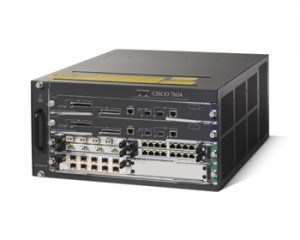 |
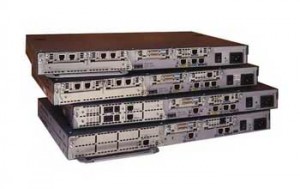 |
A router is a networking device that forwards data packets between computer networks. A router is connected to two or more data lines from different networks. When a data packet comes in one of the lines, the router reads the address information in the packet to determine its ultimate destination. Then, using information in its routing table or routing policy, it directs the packet to the next network on its journey.
Firewalls
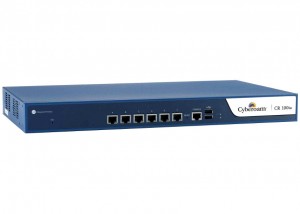 |
 |
A firewall is a network security system that controls the incoming and outgoing network traffic based on an applied rule set. A firewall establishes a barrier between a trusted, secure internal network and another network (e.g., the Internet) that is assumed not to be secure and trusted. Firewalls exist both as a software solution and as a hardware appliance. Many hardware-based firewalls also offer other functionality to the internal network they protect, such as acting as a DHCP server for that network.
Wireless
 |
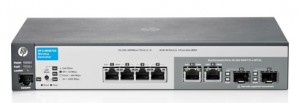 |
Access Point
A wireless Access Point (AP) is a device that allows wireless devices to connect to a wired network using Wi-Fi, or related standards. The AP usually connects to a router (via a wired network) as a standalone device, but it can also be an integral component of the router itself. An AP is differentiated from a hotspot, which is the physical space where the wireless service is provided.
Wireless Controller
A wireless LAN controller is used in combination with the Lightweight Access Point Protocol (LWAPP) to manage light-weight access points in large quantities by the network administrator or network operations center. The wireless LAN controller is part of the Data Plane within the Wireless Model. The WLAN controller automatically handles the configuration of wireless access-points.
Server Machines
 |
 |
A server is a running instance of an application (software) capable of accepting requests from the client and giving responses accordingly. Servers can run on any computer including dedicated computers, which individually are also often referred to as “the server”. In many cases, a computer can provide several services and have several servers running. The advantage of running servers on a dedicated computer is security. For this reason most of the servers are daemon processes and designed in that they can be run on specific computer(s).
Servers operate within a client-server architecture. Servers are computer programs running to serve the requests of other programs, the clients. Thus, the server performs some tasks on behalf of clients. Servers often provide essential services across a network, either to private users inside a large organization or to public users via the Internet. Typical computing servers are database server, file server, mail server, print server, web server, gaming server, and application server.
